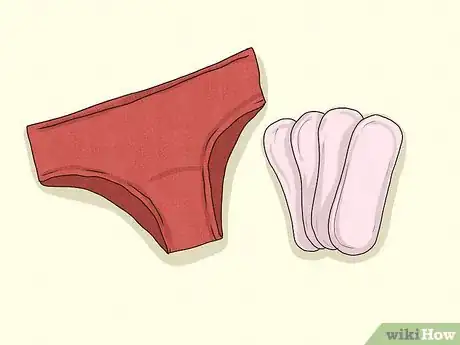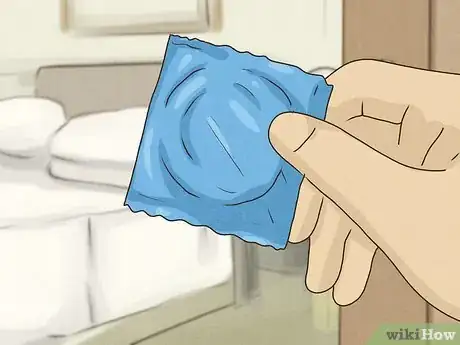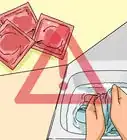This article was co-authored by Luba Lee, FNP-BC, MS and by wikiHow staff writer, Hannah Madden. Luba Lee, FNP-BC is a Board-Certified Family Nurse Practitioner (FNP) and educator in Tennessee with over a decade of clinical experience. Luba has certifications in Pediatric Advanced Life Support (PALS), Emergency Medicine, Advanced Cardiac Life Support (ACLS), Team Building, and Critical Care Nursing. She received her Master of Science in Nursing (MSN) from the University of Tennessee in 2006.
There are 8 references cited in this article, which can be found at the bottom of the page.
wikiHow marks an article as reader-approved once it receives enough positive feedback. This article received 112 testimonials and 88% of readers who voted found it helpful, earning it our reader-approved status.
This article has been viewed 3,712,140 times.
Vaginal discharge, or the fluid that comes out of your vagina, is a totally normal bodily function. It’s typical for your vaginal discharge to change slightly throughout the month, but there are some changes that could indicate a problem. Keep reading to learn how you can distinguish healthy discharge from abnormal discharge and what you can do to keep your pH balance in check.
Steps
Warnings
- If you notice a change in the color, smell, or texture of your vaginal discharge, make an appointment with your doctor right away.[15]⧼thumbs_response⧽
References
- ↑ https://familydoctor.org/condition/vaginal-discharge/
- ↑ https://www.ncbi.nlm.nih.gov/pmc/articles/PMC7789027/
- ↑ https://www.nationwidechildrens.org/conditions/vaginal-discharge
- ↑ https://www.ncbi.nlm.nih.gov/pmc/articles/PMC7789027/
- ↑ https://www.nationwidechildrens.org/conditions/vaginal-discharge
- ↑ https://www.nationwidechildrens.org/conditions/urinary-tract-infection-utis
- ↑ https://www.nhs.uk/conditions/vaginal-discharge/
- ↑ https://kidshealth.org/en/teens/vdischarge2.html
- ↑ https://www.ncbi.nlm.nih.gov/pmc/articles/PMC7789027/
- ↑ https://www.nationwidechildrens.org/conditions/vaginal-discharge
- ↑ https://familydoctor.org/condition/vaginal-discharge/
- ↑ https://www.nhs.uk/conditions/vaginal-discharge/
- ↑ https://www.nationwidechildrens.org/conditions/vaginal-discharge
- ↑ https://www.healthychildren.org/English/health-issues/conditions/genitourinary-tract/Pages/Vaginal-Infections.aspx
- ↑ https://www.mayoclinic.org/symptoms/vaginal-discharge/basics/causes/sym-20050825
About This Article
Vaginal discharge can be frustrating and embarrassing, but you can clear it up by using an unscented baby wipe to get rid of any excess discharge from the outside of your vagina. Change your underwear 2-3 times a day when you notice discharge, which will keep bacteria away from your vagina and reduce your discomfort. If you can, walk around the house without pants or sleep naked to air yourself out and reduce irritation. You can also use a pad or pantyliner if your discharge is particularly bad. However, you shouldn’t use these regularly, since they can increase your chance of infection. If your discharge is thick, white, yellow, grey, green, brown, or bloody, this could be a sign of infection, so contact your doctor for medication to clear it up. For more tips, including how to use herbal remedies to control your discharge, read on!





















-Step-10-Version-2.webp)


















































Medical Disclaimer
The content of this article is not intended to be a substitute for professional medical advice, examination, diagnosis, or treatment. You should always contact your doctor or other qualified healthcare professional before starting, changing, or stopping any kind of health treatment.
Read More...